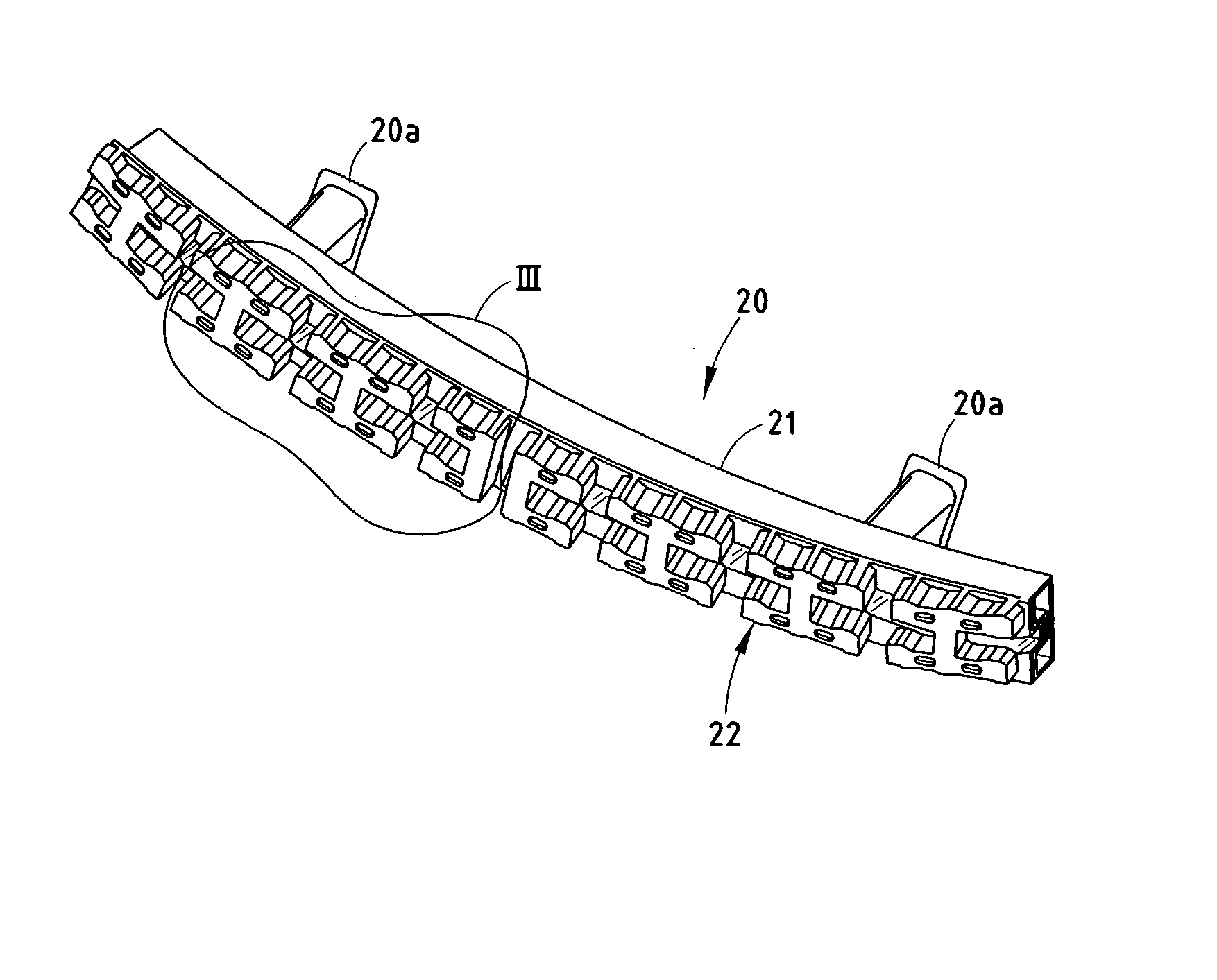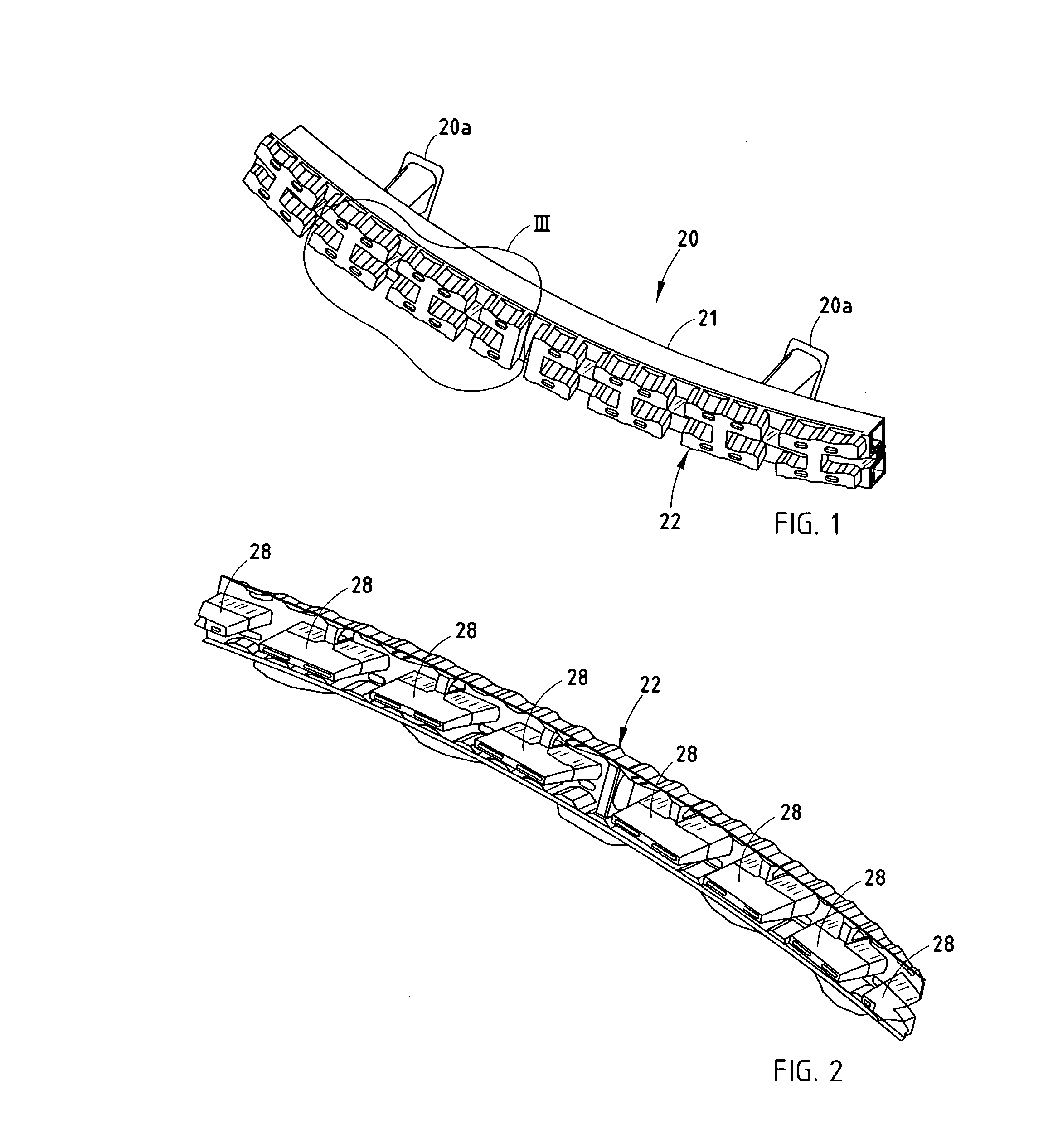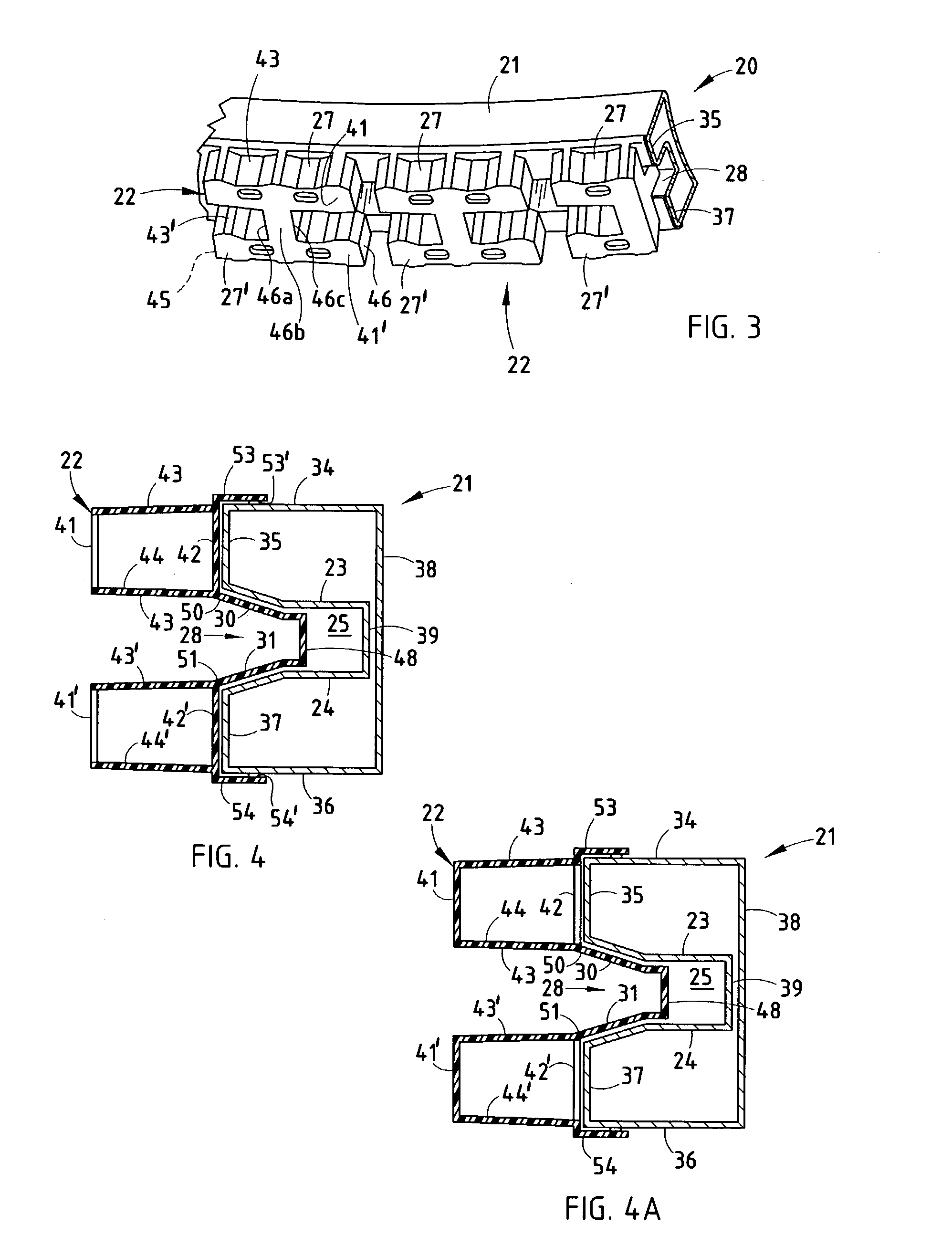Bumper system with face-mounted energy absorber
a technology of energy absorption and bumper system, which is applied in the direction of bumpers, vehicle components, vehicular safety arrangements, etc., can solve the problems of inconsistent collapse of the bumper system, unfavorable vehicle safety, and unfavorable vehicle safety, so as to reduce damage to the vehicle, prevent the condition of die lock, and facilitate tooling
- Summary
- Abstract
- Description
- Claims
- Application Information
AI Technical Summary
Benefits of technology
Problems solved by technology
Method used
Image
Examples
Embodiment Construction
[0051] In regard to the illustrated preferred embodiment, a bumper system 320 (FIGS. 26-31) for vehicles includes a bumper beam 321 and an energy absorber 322 attached to a face of the bumper beam 321. The illustrated beam is rollformed and swept (see Sturrus U.S. Pat. No. 5,454,504) and has a continuous B-shaped double-tubular cross section (FIG. 27). The double tubes are spaced vertically apart and include top and bottom mid-walls 323 and 324 defining a longitudinally-extending channel 325 along its rear surface. A polymeric energy absorber 322 has a length with multiple box-shaped sections 327 (five box-shaped sections are shown, but not all are the same length) that abut the front surface 326 of the bumper beam 321. The energy absorber 322 further includes a plurality of tying sections 328 that extend longitudinally between the box-shaped sections 327 and also vertically between top and bottom portions 327 and 327" of the box-shaped sections 327, as discussed below.
[0052] The B-...
PUM
 Login to View More
Login to View More Abstract
Description
Claims
Application Information
 Login to View More
Login to View More - R&D
- Intellectual Property
- Life Sciences
- Materials
- Tech Scout
- Unparalleled Data Quality
- Higher Quality Content
- 60% Fewer Hallucinations
Browse by: Latest US Patents, China's latest patents, Technical Efficacy Thesaurus, Application Domain, Technology Topic, Popular Technical Reports.
© 2025 PatSnap. All rights reserved.Legal|Privacy policy|Modern Slavery Act Transparency Statement|Sitemap|About US| Contact US: help@patsnap.com



